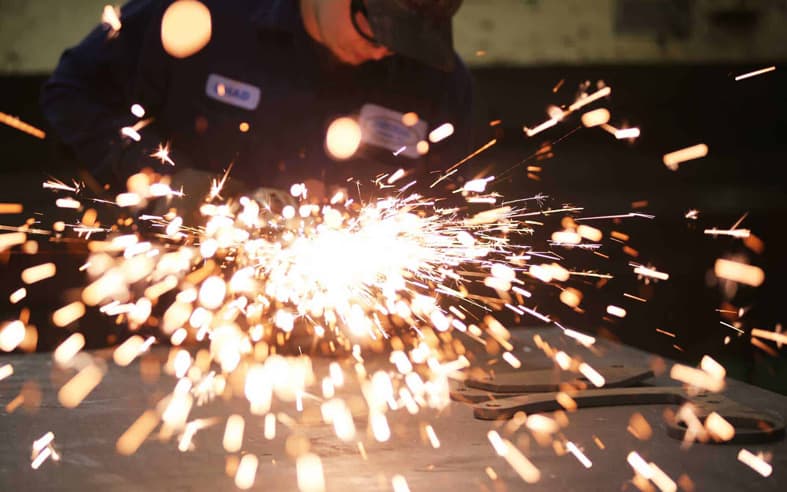Across many industries, combustible dust puts people in harm’s way. OSHA’s National Emphasis Program has drawn attention to the issue of combustible dust and dust explosions. In addition, NFPA has developed two new standards addressing combustible dust safety and management. They are NFPA 652 and 654.
NFPA 652 Standard on the Fundamentals of Combustible Dust, covers the basic (and the not so basic) details. NFPA 654 Standard for the Prevention of Fire and Dust Explosions from the Manufacturing, Processing, and Handling of Combustible Particulate Solids, is almost as much fun as its name suggests, but it’s critical for NFPA compliance.
Special Standards for Combustible Dust Handling
NFPA Standards 652 and 654 both focus on combustible dust. However, they do approach the problem from slightly different angles.
NFPA 652 Standard on the Fundamentals of Combustible Dust offers an overview of combustible dust safety across all industries. This standard is very specific about the requirements for safe handling and fire prevention for all types of dust. NFPA 652 specifies the need for a dust hazard analysis by September 2020, and explains what this analysis must cover.
NFPA 654 Standard for the Prevention of Fire and Dust Explosions from the Manufacturing, Processing, and Handling of Combustible Particulate Solids, looks like it must have the longest name of any NFPA standard (but it doesn’t). This standard focuses more on the processes that produce combustible dust hazards. In addition, it includes material handling and equipment that generates dust.
NFPA 652 and 654: Why Two Different Combustible Dust Standards?
At this time, NFPA 652 has more attention than NFPA 654. Because of the dust hazard analysis required by 2020, companies doing a hazard analysis need to understand this standard. So, the instructions for conducting a dust hazard analysis have many people looking at this standard right now.
Secondly, NFPA 654 is a much broader standard. It gives more information about how to design safe systems for combustible dust management. This includes active and passive fire and explosion control, explosion venting, and system specifications.
NFPA 654 overlaps quite a bit with industry-specific standards, and also with NFPA 68 on explosion venting and NFPA 69 on explosion prevention. The NFPA constantly adapts standards to meet the newest research and data, so expect to see more references back and forth between NFPA 654 and other standards related to combustible particulate.
What Do NFPA 652 and 654 Mean for Me and My Facility?
 First, NFPA 652 requires you to determine the combustibility of your dust. At Imperial Systems we can assist you with a dust test at an approved facility. If your dust is not combustible, these standards don’t apply to you.
First, NFPA 652 requires you to determine the combustibility of your dust. At Imperial Systems we can assist you with a dust test at an approved facility. If your dust is not combustible, these standards don’t apply to you.
If your dust is combustible, you will need to conduct a dust hazard analysis. This should include evaluating these areas:
- General housekeeping and how dust accumulation can be prevented
- Avoiding ignition sources, including sparks, static electricity, or hot work
- Processes creating a large amount of extra dust
- Possible machine failures (e.g. an overheating bearing) that could ignite dust
- Other potential places where dust could accumulate and ignite
The dust hazard analysis shouldn’t be done quickly just to get it over with. Sometimes, a solution that’s not well-planned can cause a disaster.
Here’s an example:
The notorious Imperial Sugar dust explosion involved many failures. These included loose piles of sugar, nonfunctional dust collectors, and sugar dust falling off conveyor belts and other machinery. The direct cause of the explosion, though, came from a process change trying to fix a problem.
A conveyor belt ran underneath the facility. Sugar spilled off this belt. Sometimes, it also got stuck together in clumps, spilling more sugar. Imperial Sugar decided to cover the conveyor belt to prevent sugar from escaping. Unfortunately, this created a major hazard that no one noticed at the time: instead of dispersing through the open space, the sugar dust became very concentrated inside the enclosure. When there was enough sugar in the air space to ignite, the resulting explosions destroyed most of the facility.
This incident often gets used as an example because it shows how a minor process change can create a dangerous situation. An online search will help you find several different checklists you can use to guide your dust hazard analysis. This needs to be done by September 2020, so don’t wait till the last minute to get started.
NFPA 654 is a more general standard that unites many of the other NFPA standards together to address combustible dust. Industry and material-specific standards remain important, but this standard helps people apply these to combustible dust hazards.
Confused by the Dust Hazard Analysis Requirements?
You’re not the only one. The team conducting the dust hazard analysis could include plant managers, maintenance, quality control, shop floor supervisors, or anyone else aware of possible issues. Some facilities may hire a consultant to come in and assist.
We can assist you with conducting a dust test, which determines whether the combustible dust standards will apply to you. For a dust test, you will usually send us a sample of your dust. Contact us for more information.
If you need to know whether your dust collector presents any hazards, you can request a visit from our ServiceMAXX team. Our professionals can inspect your dust collection system and identify any parts that need maintenance or repairs. If your fire and explosion prevention is missing an important component, we’re here to help!


